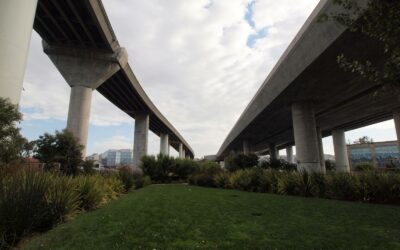Executive Summary
As a project site safety manager, if all you had to do was “safety” all day, your job would be easy. But as a safety professional, much of your time is spent convincing project managers, superintendents and executive management of the value is spending money on safety to improve the bottom line. A highly effective means of improving the bottom line with minimal cost is the implementation of a site safety committee (SSC) on your projects.
In my opinion, implementation of the SSC almost guarantees decreased costs as a result of:
- increased product ion rares,
- incrcast’d efficiency of the work.
- improved resource allocation.
- better cooperation between the trades, and
- decreased recordable incident rate (IUR) and experience modifi er rate (EMR).
Site Safrty Commil!ees benefit all projects, regardless of the size and scope of lhe work. As project site safety managers, we arc able 10 pro-vide perspective from both anglcs—lhe project manager side concerning cost and bottom line profits and the safety side requiring compliance and safe work proet:dures. Presenting the principk:s of this article to your cor-porate cxn:utives and field project management is an easy sd!.
Purpose, Makeup of the SSC
The purpose of th(” SSC is to get real-time feedback on the condition of safety and production on your job-site. There is no better way of doing that than by inviting your field per-sonnel to a weekly, 30-minute, on-site, lunchtime meeting. The size of your committee is dependent upon the size of your workforce. In addition to the project manager and safety man-ager, your committee membership should represent a cross-section of trades on your own payroll, as well as representation by any key subcon-tractors.A committee size of three to eight people, excluding the project manager and safety manager, is about righi.Too few people does not gener–ate discussion and too many people does not allow each person enough lime to speak.
It is vital that the members be craft personnel with no management responsibility; therefore, members should not be foremen or higher. We find that employing any field management in the meeting detracts from getting to the hard-core truth of safe-ty and production problems that exist on the site. Workers usually warm up after a few minutes or even as long as a meeting or two, and then come forward with sometimes pretty raw, uncensored information.
The way to start the first meeting is to have the project manager explain that he/she has the overall responsibility for the site and that the pur-pose of the meeting is to hear it all—hoth the good and the bad. We often worry that stories will be abridged or incomplete because of the workers’ kar of retaliation We immediately try to eliminate thi:-. fear by assuring the workers that information provided in tht’. meeting wiH not kad to termina-tion of employmem for the person reporting the incident or unsafe act.
After the project manager has com-municated this message, committee members introduce themselves by stating their craft and the area of the project where they arc working. This serves as a good icebreaker and helps break down the barriers between the employees.
The Meeting
‘You must have an agenda that con-trols the flow of the meeting. One suggestion is to run down the largest hazards on your site, which may include: housekeeping, fall protection, new employees, ventilation, trench safety, work area access, and subcon-tractors. While most meeting agendas are written to maintain strict control of topics of discussion, the goal is to promote conversation.
Some of the notable items we have heard include:
- Access–Jt took tht’ site superintendent tripping on an access ramp before it was finally repaired.
- Lax fall protection—c’>ubcontrac-tors not tying off on tall rebar curtains constitutes a hazard.
- Leading by example, or not-Lack of salety implementation by our field supervisors did little to motivate our craft personnel to wear the proper personal protec-tive equipment (PPE).
- PPE selection-Complaints about a certain brand of fall arrest har-ness led to changing brands for increased comfort of our workers.
- Number and condition of small tools—-We commonly hear that we need more ladders or replace-ment of rigging such as slings and shackles.
At one meeting a worker casually mentioned that he had to look for a place to plug in his extension cord because all the spider boxes (multi-ple outlet power sources) were in use. He ended up unplugging some-
one else’s cord.The other members then chimed in that they too were experiencing thar problem. It seems that the process was that the worker would continue to unplug cords until no ont’ yelled at them request-ing the return of power. If they unplugged a cord and no one yelled, that meant the cord was not in use. Word got out quickly that this prob-lem was addressed by the superin-tendent following the SSC discussions. As a result, more issues were brought up and taken care of at our weekly meetings.
As the concerns mount, add an action item list that is reviewed weekly. 1be project manager and safety manager should be held accountable for following up on the open items.
Costs
Winning the acceptance from your company’s non-safety personnel is easy because the costs associated with this implementation arc little to none. Depending on your workforce, union or non-union, different work rules will apply. We have a voluntary committee that meets during their Friday lunch break We always provide lunch to the members. We meet on the jobsite, so there is no lost time. Wherever you choose to have the meeting, the room should be clean and comfortable for the members.
Conclusion
The SSC has been an integral part of making our jobsites safer and more efficient. Just by giving the workers a voice, they have taken ownership in the project. We sleep better at night knowing that they have a better
pulse on the job. All safety managers will tell you that safety and production go hand in hand. and the implementation of an SSC is a testament to this adage.
Work Safe!





0 Comments